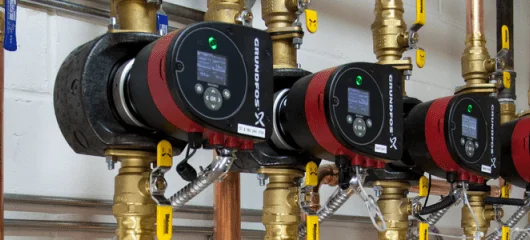by Mark Olson, CEO of Caleffi North America, Inc.
as featured in HPAC Magazine
February 2017
Two common problems resulting from poor water quality are excessive corrosion and limescale accumulation. In Part I (HPAC, February 2017) we examine corrosion. In Part II (HPAC, August 2017, we examine limescale). The following is a closer look at corrosion.
Designers of modern hydronic systems strive for two important objectives: a reliable system and an energy efficient system. Achieving these requires proper equipment selection as well as attention to water quality. Unfortunately the latter is often overlooked, or left to the discretion of the installer, who may or may not appreciate its importance.
The two primary problems that can result from poor water quality are excessive corrosion and lime-scale accumulation. Both shorten equipment life and reduce energy efficiency.
No two systems are alike, which makes hydronic water chemistry an inexact science. Still, a basic understanding of how water behaves in a closed hydronic system can help the designer weigh options and determine appropriate water quality requirements.
In this article, we will discuss corrosion. Lime scale corrosion will be examined in a future article.
Read the full article as featured in HPAC.







I have an in-floor heating system (Noritz on demand DHW and heating system) that has an autofill system to keep a constant pressure on the in-floor heating that uses a Caleffi 553 automatic filling valve. When installed by the plumber, he set the pressure to adjusting screw to 15 PSI and the adjusting knob to 12 psi which happens to be the minimum operating pressure the heating system. This seems to cause the system to shutdown as pressure seems to be at a minimum. For rotation of the adjusting knob, what direction does the knob need to be rotated to increase pressure on the gauge?
Hello David
The adjustment on the 553 auto fill valve is the brass screw on the top of the valve in the center of the dial. this is the only way to increase or decrease the system pressure.
The grey knob on the bottom of the valve is an isolation shutoff for servicing purposes. The grey knob should be screwed out all the way from the body. Turn the knob towards the minus direction. When the grey knob is in the fully open position, the flow cartridge can move freely against the spring and diaphragm to the correct pressure setting.